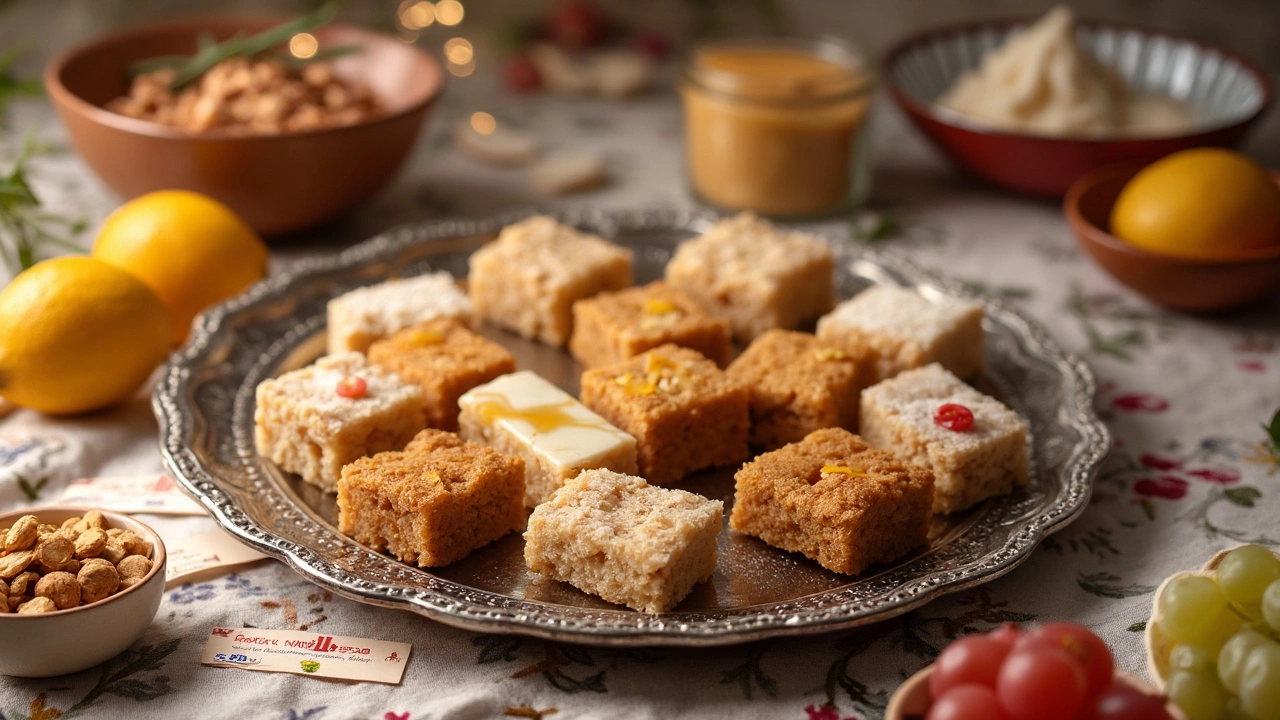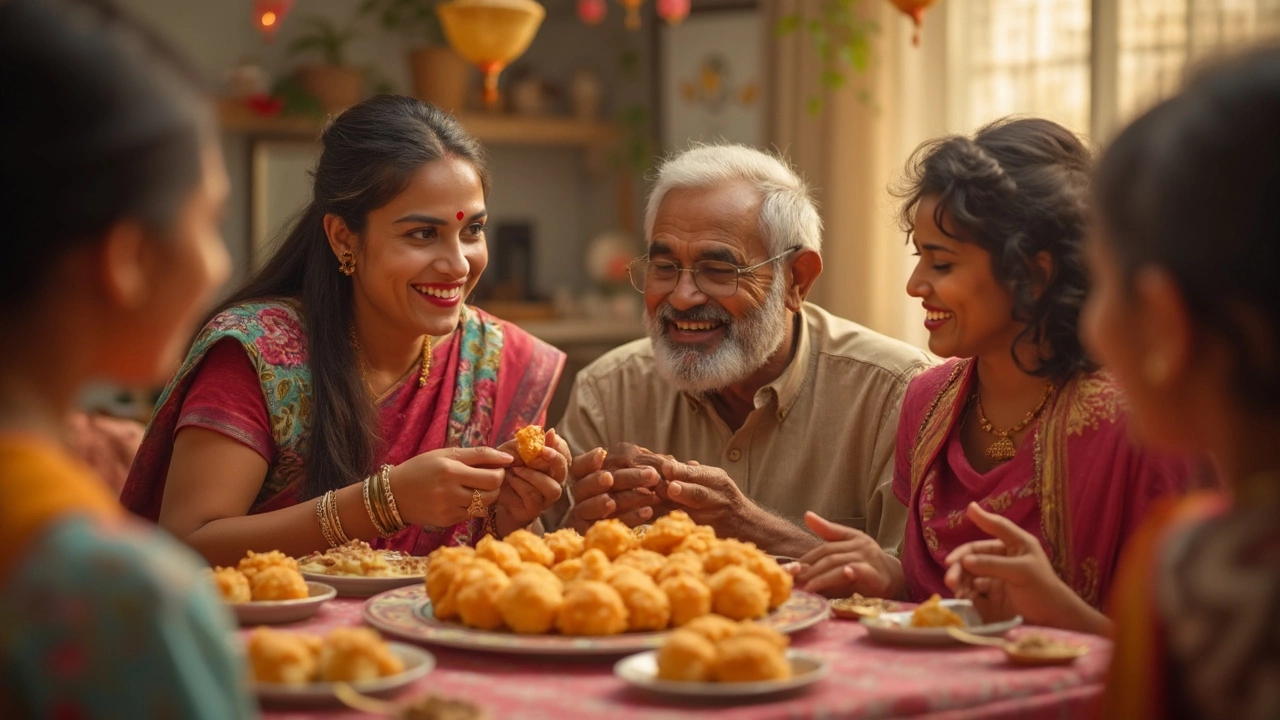So, your sweet tooth is famous and your sugar levels are stubborn. Indian sweets can feel like the ultimate test of willpower, especially with all the laddus, jalebis, and barfis popping up at every celebration. Diabetics hear a lot of horror stories about sugar levels swinging out of control with just one bite. But is it really impossible to enjoy Indian desserts if you have diabetes?
Turns out, you don’t have to swear off sweets forever. It’s all about knowing what goes into your favorite treats, how they affect your blood sugar, and using a few smart tricks. Whether you’re dealing with cravings during Diwali or just missing the evenings your grandma made gajar ka halwa, there are ways to join the party without feeling left out—or guilty.
Let's get real about how Indian sweets impact diabetes, and explore which options are more forgiving. It’s not about banning everything sugary; it’s about smarter choices. Ready? Your cravings are about to get some company from common sense.
- Why Indian Sweets Are Tricky for Diabetics
- Debunking Common Myths About Sugar
- Easy Sugar Swaps & Recipes
- Smart Tips for Celebrating with Sweets
Why Indian Sweets Are Tricky for Diabetics
If you’ve ever watched someone make mithai in an Indian sweet shop, you know sugar is front and center. Most classic Indian desserts use heaps of white sugar, khoya (milk solids), condensed milk, or jaggery. That means they’re carb-loaded and don’t exactly do your blood sugar any favors. One kaju katli square can pack over 12 grams of sugar—kind of wild for something that fits on your fingertip.
The diabetics struggle is real because these ingredients break down super fast in your body, causing blood sugar to spike quickly. Pair that with the fact that Indian sweets rarely have any fiber or protein (which help slow sugar absorption), and you’ve got a recipe for trouble if you’re not careful.
- Most sweets like gulab jamun or jalebi are soaked in sugar syrup—pure, liquid carbs.
- Even "natural" sweeteners like honey or jaggery raise blood glucose just as much as regular sugar.
- Portion size is sneaky. It’s easy to eat three or four laddus without realizing just how much sugar you’re getting.
Here’s a handy table showing the average sugar content in some everyday Indian sweets:
| Indian Sweet | Average Sugar per Piece (g) |
|---|---|
| Gulab Jamun (1 piece) | 18 |
| Kaju Katli (1 square) | 12 |
| Rasgulla (1 ball) | 13 |
| Laddu (1 piece) | 15 |
| Jalebi (1 piece, medium) | 20 |
To make things tougher, Indian sweets often show up during festivals, weddings, and family gatherings—times when it’s easy to lose track of what you’re eating. Plus, there’s pressure to join in and "just have one more." That sense of missing out only makes cravings stronger.
This doesn’t mean you have to say no forever, but you definitely need to know what you’re up against. Knowing the facts is half the battle when you want to enjoy life and still keep your sugar in check.
Debunking Common Myths About Sugar
There are a lot of rumors floating around about sugar and diabetes. Some people say diabetics can’t even look at a plate of mithai without getting into trouble, while others claim switching to honey or jaggery makes everything safe. Time to clear the fog, right?
First up, all types of sugar—white sugar, brown sugar, jaggery, and honey—can bump your blood sugar up. It doesn’t matter if it looks healthy or comes from an old recipe your nani swore by. The body usually sees them almost the same way. A research review from the American Diabetes Association put it plainly:
"Substituting honey or other 'natural' sugars for white sugar does not lower blood glucose responses significantly in people with diabetes."
Next, there’s a myth that ‘sugar-free’ automatically means healthy. A lot of sugar-free sweets found at mithai shops or online can still be packed with carbs, unhealthy fats, and even sneaky starches. Always check the label—some will shock you with all the extras you weren't expecting.
Another misconception? Cutting down on all carbs is the only way to keep numbers in check. Actually, it’s more about the kind of carbs and how you spread them out through the day. You don’t need to run away from every grain of rice or every piece of fruit, just watch the portions and pair carbs with protein or healthy fats. This calms the sugar surge.
- Diabetics do not have to swear off Indian sweets forever. Moderation and smart substitutions work better than strict bans.
- No sugar alternative is magically safe—portion size and total carbs matter way more.
- Homemade sweets let you control ingredients and make smarter swaps, so you’re not at the mercy of someone else’s recipe.
If you hear someone pushing a one-size-fits-all rule about sugar or Indian desserts, take it with a pinch of salt (or maybe, a sprinkle less sugar).

Easy Sugar Swaps & Recipes
If you’ve ever wondered how to make Indian sweets less risky for diabetics, the trick is swapping regular sugar for safer options. Most recipes can handle a little adjustment, and honestly, sometimes you’ll barely taste the difference.
Here’s where things get practical. Skip the white sugar and try out these sweetener swaps in your favorite Indian desserts:
- Stevia: It’s a plant-based sweetener. Super low on carbs and won’t spike your blood sugar. Works well in kheer or shrikhand.
- Erythritol: This sugar alcohol tastes almost like regular sugar but has barely any calories or carbs. Use it for rasgullas or besan laddus.
- Monk Fruit Extract: Gaining popularity in India now, it’s great for phirni and kalakand. Bonus: it has no aftertaste if you get the right brand.
- Dates (in moderation): Dates are natural, but don’t go overboard. They’re still high in carbs but gentler on the blood sugar than regular sugar when used minimally, like in date and nut burfi.
Sweetener impact matters. Here’s a handy table comparing sugar and common swaps, so you’re not just guessing:
| Sweetener | Calories per tsp | Glycemic Index | Suitable Indian Sweets |
|---|---|---|---|
| Sugar | 16 | 65 | Almost all |
| Stevia | 0 | 0 | Kheer, shrikhand, barfi |
| Erythritol | 0.2 | 0 | Laddu, rasgulla, sandesh |
| Monk Fruit | 0 | 0 | Phirni, kalakand, peda |
| Dates (minimized) | 20 | 42 | Date burfi, dry fruit ladoo |
Now, here’s a quick sugar-free version of a classic sweet that’s actually tasty:
- Stevia Kheer: Boil 500ml toned milk, add 2 tbsp basmati rice, and let it cook till soft. Stir in your favorite stevia brand (following the sweetness level on the packet), toss in a hint of cardamom, and finish with slivered almonds. That's it. The texture and flavor feel authentic—just a lighter after-effect on your blood sugar.
Tip: Fiddle with the recipes till you find your sweet spot—each brand of alternative sweetener hits a bit differently for taste. And don’t skip reading nutrition labels. Some “diabetic-friendly” sweets still hide weird carbs or cheap fillers; always check what you're actually eating.
Remember, enjoying diabetics Indian sweets is all about balance. Swaps can help, but portions matter too. A smaller piece is always the smarter piece.
Smart Tips for Celebrating with Sweets
Celebrations and Indian sweets go hand in hand, but managing diabetes doesn’t mean missing out. Here’s how you can enjoy the festivities without sending your numbers through the roof.
- Plan ahead: Check if sweets will be served and adjust your meals before and after. If you know you’ll have kheer after dinner, skip the roti or rice to balance your carb load.
- Watch your portions: One small piece is usually enough to curb cravings and keep things under control. You don’t have to eat a handful of ladoos—just enjoy a single bite. Use a smaller plate or cut desserts in half.
- Pick protein with your sweets: Pair your sweet with nuts or Greek yogurt. Protein helps slow down sugar’s entry into your bloodstream, making blood sugar spikes less dramatic.
- DIY healthier versions: Try making your own treats using sugar alternatives like stevia or monk fruit. Swap khoya with paneer, use almond flour instead of regular flour, and choose dates or figs for sweetness in moderation.
- Time your treats: Eat sweets right after your main meal rather than on an empty stomach. You might be surprised how much less sugar affects your blood glucose when you’re not hungry.
- Stay active: Even a 10-minute walk after your meal helps your body use up the extra sugar. This tip is so underrated and works every single time.
Here’s a quick comparison of some popular Indian sweets and their estimated sugar content per serving, so you know what you’re dealing with:
| Sweets | Average Sugar (g) per piece | Carbs (g) |
|---|---|---|
| Gulab Jamun | 22 | 29 |
| Jalebi | 38 | 45 |
| Sandesh (with less sugar) | 9 | 13 |
| Coconut Laddu (homemade with stevia) | 2 | 6 |
| Besan Barfi | 14 | 19 |
If you’re at a gathering, don’t hesitate to ask what sweetener or ingredients were used—most hosts these days understand and appreciate it. When you’re making sweets, label them as low-sugar or diabetic-friendly to help others, too.
One last thing: test your blood sugar about two hours after enjoying your Indian sweets. This real-time feedback helps you figure out what works best for your body. Festivities can be just as fun when you’re smart about your choices.
